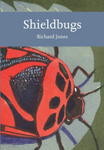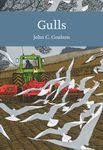By
Leon (NHBS Catalogue Editor)
19 Sep 2024
Written for Hardback

In 2016, scuba-diving philosopher Peter Godfrey-Smith made a huge splash with his book
Other Minds in which he explored the evolutionary origins of a mind quite unlike ours, that of the octopus. In 2020, he followed this up with the altogether more cerebral
Metazoa in which he explored the evolution of animal minds more broadly. I reviewed both books favourably. Now, another four years later,
Living on Earth is presented retrospectively as the conclusion to this trilogy exploring the origins of intelligence. In a book that is never less than thoughtful, Godfrey-Smith examines how life shapes, and has been shaped by, its environment.
Godfrey-Smith tackles the above theme in three parts. Before delving in, his first chapter provides an additional evocative angle on what he wants to examine: "The history of life is not just a series of new creatures appearing on the stage; the new arrivals change the stage itself" (pp. 6–7). Through their actions, organisms modify their environment and, in more formal terms, he considers "organisms as causes, rather than evolutionary products" (p. 7). To my surprise, despite the fascinating concept,
Living on Earth did not impress me as much as the previous two books. In part, the bar has been put so high that I went in with elevated expectations; in part, it wanders quite widely into subjects that seem only tangentially related to its core theme. Below, I will describe the book's three parts and try to substantiate why it did not sweep me off my feet the way its predecessors did.
The first part explores the life-as-cause angle best, I felt. Three chapters cover some of the important steps in the history of life though his aim is not to give a rundown of all the major transitions in evolution. To be honest, I was expecting the book to go full-bore on the conceptual side of life-environment coevolution as there are many fascinating and still controversial topics here. A relevant concept such as niche construction now only features briefly, and while he covers culture, other mechanisms by which the environment can influence heredity, such as epigenetics, are omitted from his story.
Instead, Godfrey-Smith has a slightly different plan. In the second part, he turns his attention to the human mind with two chapters that are grab bags of topics centred on culture and consciousness. He considers culture in the broad sense of non-genetically transmitted behaviours such as tools, language, and writing. Regarding consciousness, he argues this is widespread in animals and evolved gradually. He prefers the term "felt experience" instead of consciousness, and in a beautifully concise turn of phrase describes animals as "a nexus in which sensing and action meet, with a mass of causal lines coming in and radiating out" (p. 158). This creates a system that has a point of view. The third part changes tack again. Given that human minds evolved and are proving to be an Earth-shaping force, should we act differently towards our environment and, if so, how? Using several ethical theories as guidance, he tackles animal welfare in farming and experiments, climate change, and conservation.
On the back of this very brief outline of the book's structure and topics, I have three closely intertwined observations. First, as already mentioned, the book meanders a fair amount. In his first chapter, Godfrey-Smith describes
Living on Earth in arboreal terms and calls it a forest book: from the main stem, many topics branch off and will be explored. This seems particularly apparent in the second part of the book. He discusses, for example, how and at what cost humans transitioned from a nomadic hunter-gatherer existence to settled societies. Another example is how he delves into the nature of nervous systems, how they are about more than connectivity between neurons but also display large-scale electrical patterns, and what this means for attempts to replicate brains artificially. These and various other topics are all captivatingly presented but sometimes feel like tangents that lead the reader quite far from the core theme of life-environment coevolution.
Second, and in part explaining the first observation, is that Godfrey-Smith is never less than thoughtful. Ideas are given serious consideration and nothing is discarded out of hand. For example, addressing James Lovelock's Gaia hypothesis is unavoidable given the core theme of
Living on Earth. Since I did a deep dive on this topic, I was very interested to read his sceptical but fair assessment that raises some of the same objections Tyrrell also raised in
On Gaia. Another example is how he spends several pages on the rather curious observation of inter-brain synchrony. Simultaneous brain scans of multiple people (so-called hyperscanning) have shown that large-scale electrical oscillations in brains can synchronize (to an extent) during cooperative tasks. This is a very controversial area of research that has its roots in 1960s attempts to demonstrate telepathy. He is sceptical but does not want to immediately dismiss these observations.
Third, this is his most personal book to date. By carefully exploring ethical quandaries using different frameworks, Godfrey-Smith explains his views on thorny subjects. For example, why does he oppose factory farming? Rather than turning to utilitarianism or Kantian ethics, he proposes a framework of "a life worth living". The admittedly imperfect but useful litmus test is whether, after considering an animal's whole life, you still would want to reincarnate as one. Another example is his view on conservation. He rightfully points out that climate change is dominating environmental discourse, and then goes on an extended discussion of whether, why, and how we should protect wild nature. After pointing out how it gave rise to all lifeforms on Earth, he concludes that "there's a kind of ingratitude in allowing the extinctions, the narrowing, the reduction of animal life. I am proposing that we take some responsibility for this creative engine, and value its continuation" (p. 248).
In his acknowledgements, Godfrey-Smith writes how "a book about octopuses led to a book about nearly everything" (p. 305) and
Living on Earth is indeed easily the most ambitious of the three. The writing remains as accessible as ever, despite venturing into technical areas. Nevertheless, I found I had to reset my expectations after the previous two books and was thrown a bit by it being a somewhat less focused affair. In covering so much ground, this is a book that might not offer readers instant gratification; rather, this is a journey that requires some patience. The trip is worth it, however; when Godfrey-Smith leads you to a certain vantage point on a topic, the view can be sublime.

























![Kame no Kōra wa Abarabone: Jintai de Arawasu Ugokumonozukan [Turtle Shells Have Ribs: A Picture Book of Animal Anatomy Represented by the Human Body]](http://mediacdn.nhbs.com/jackets/jackets_resizer_medium/24/249897.jpg?height=150&width=99)











